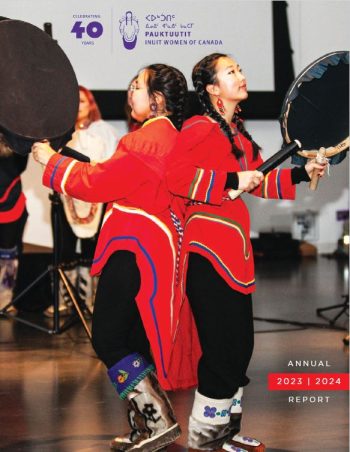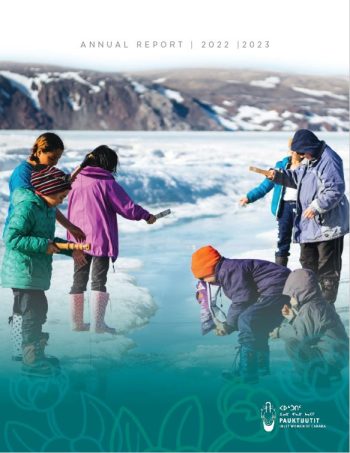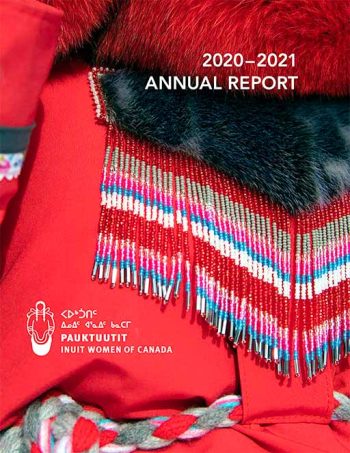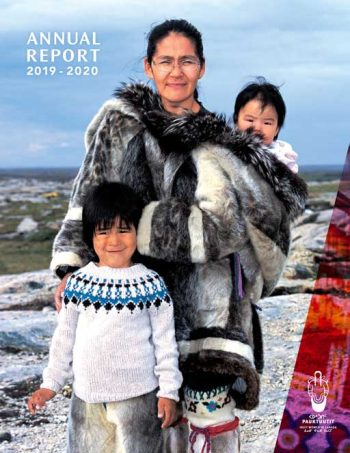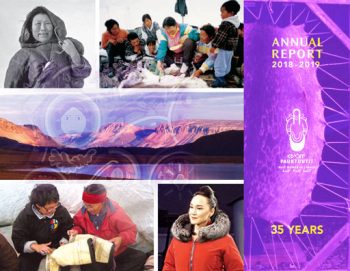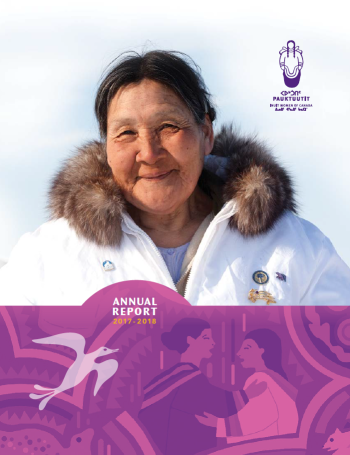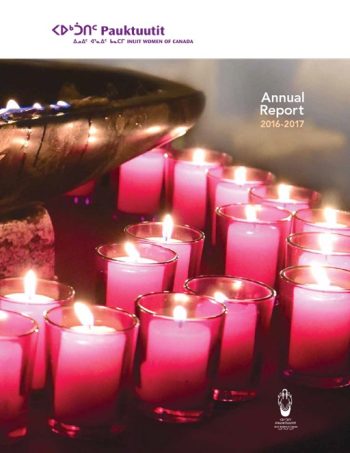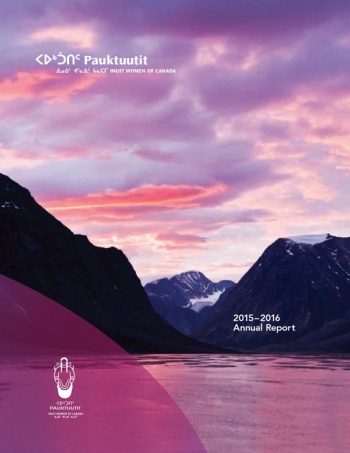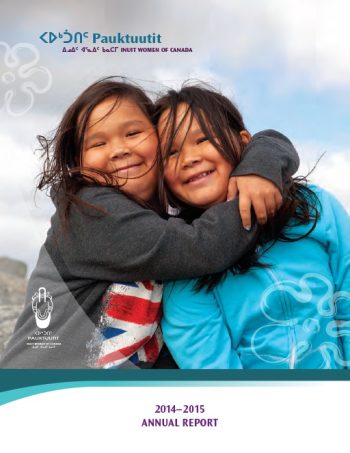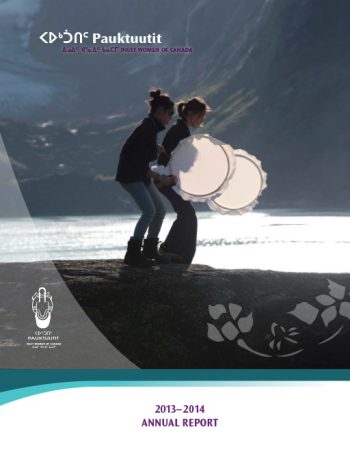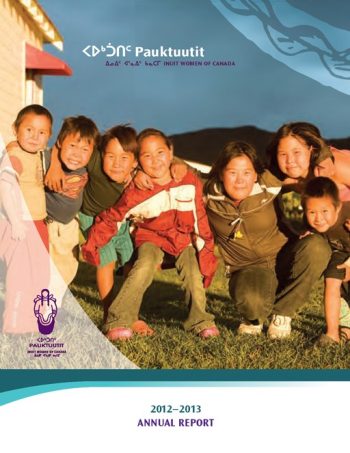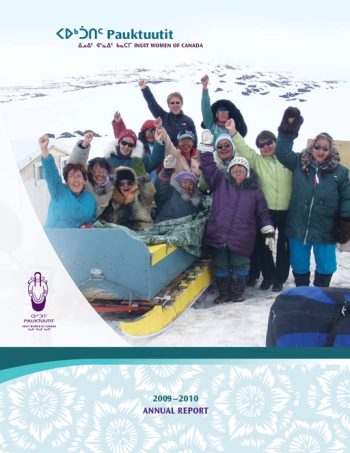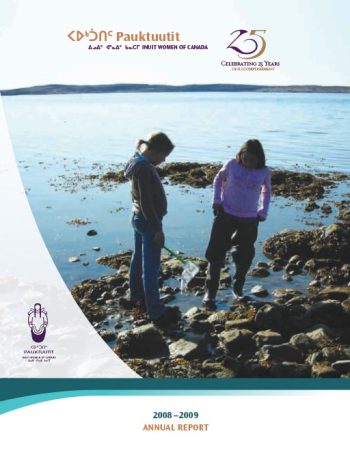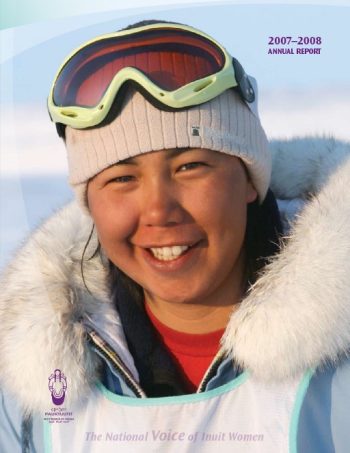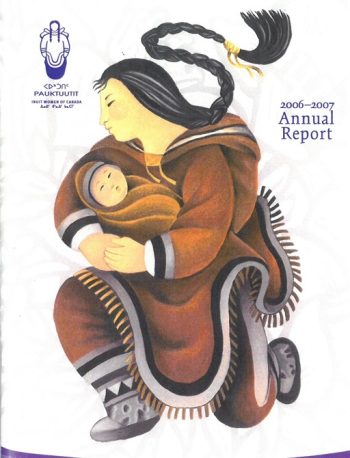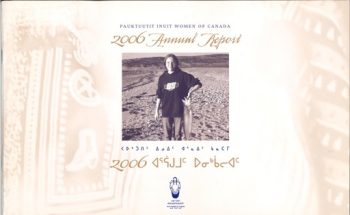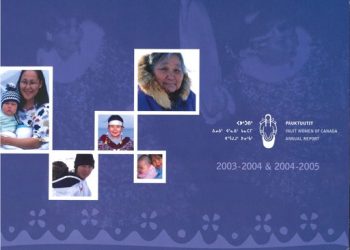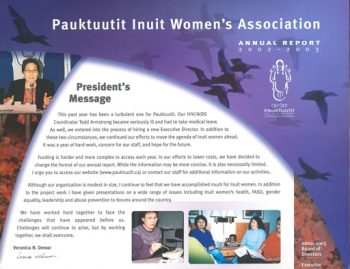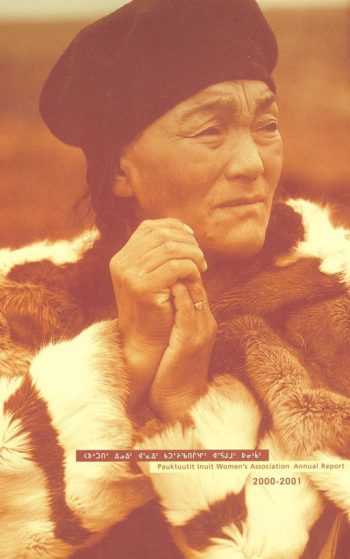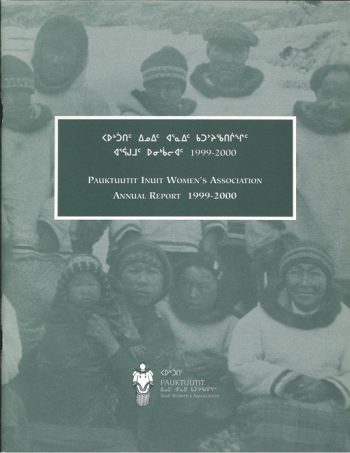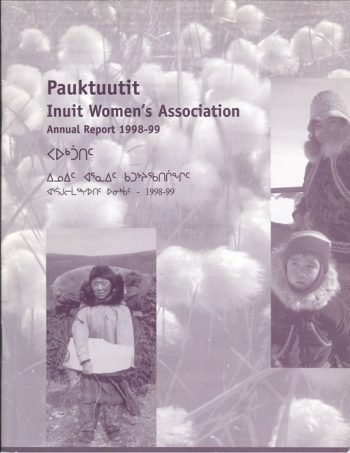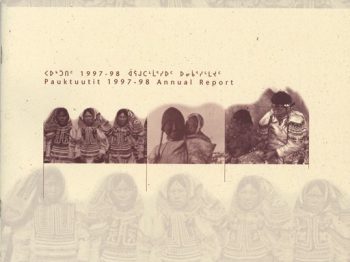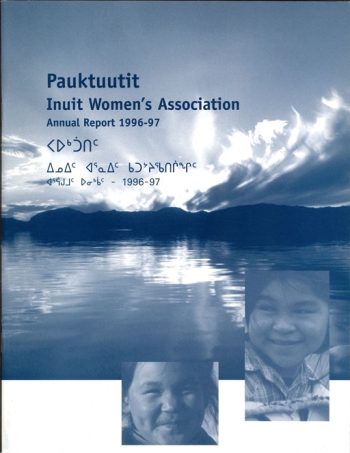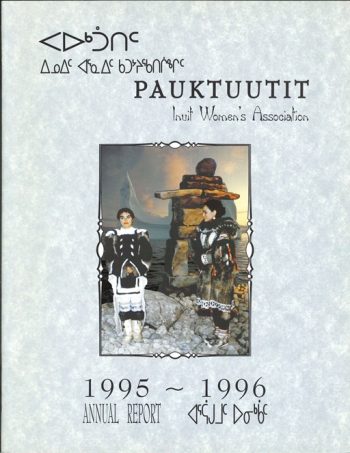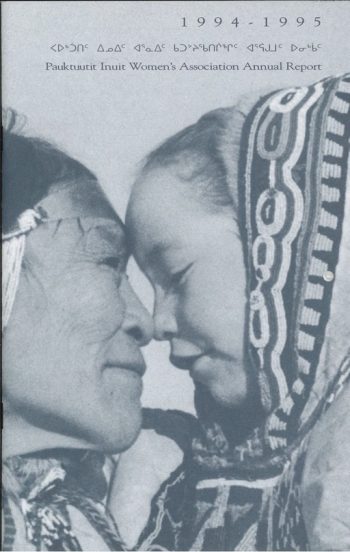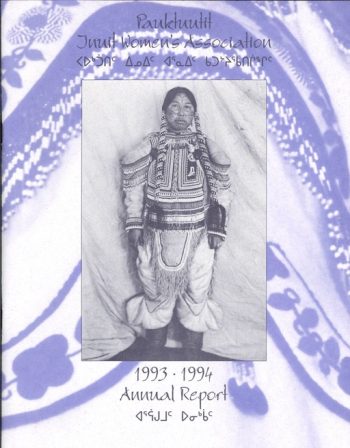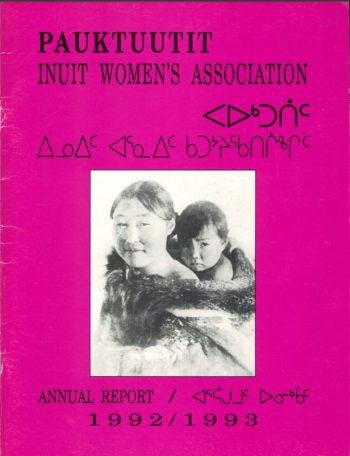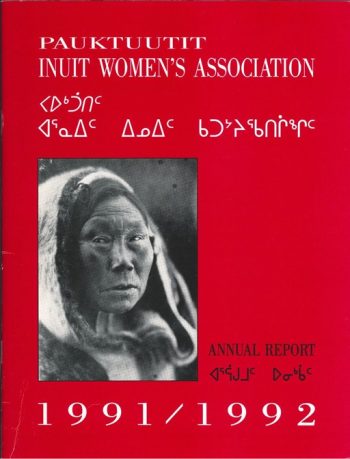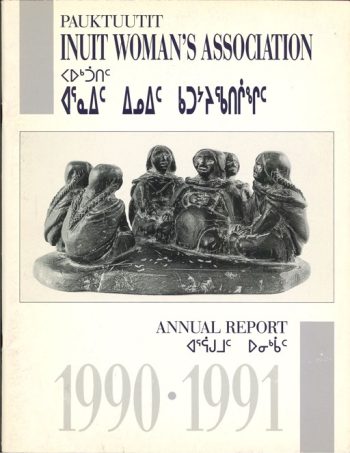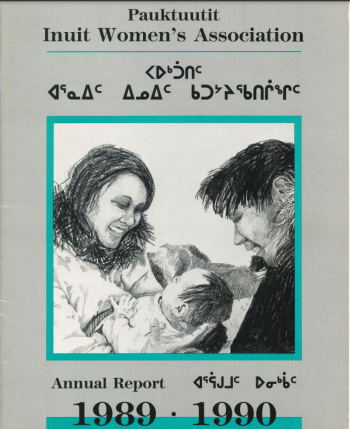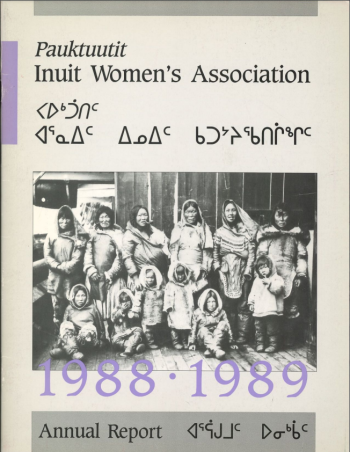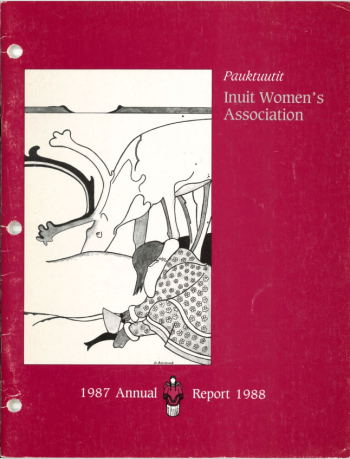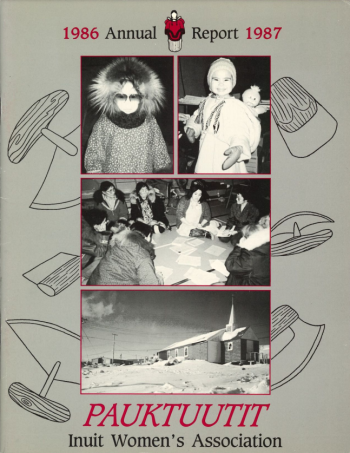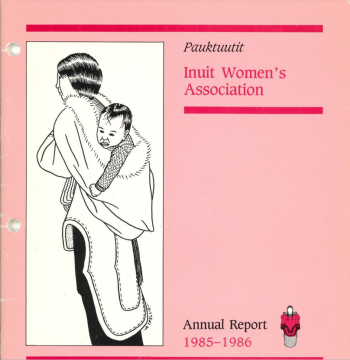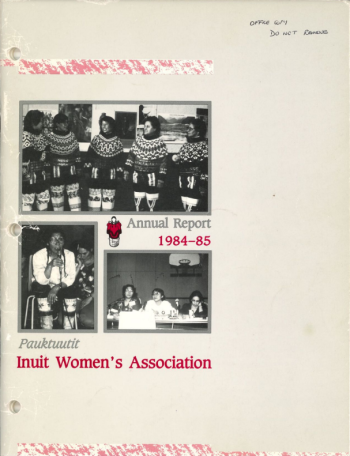Publications
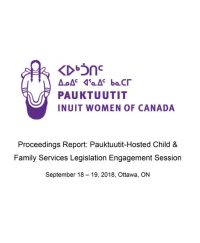
Proceedings Report: Pauktuutit-Hosted Child & Family Services Legislation Engagement Session
September 18 – 19, 2018, Infinity Centre, Ottawa
https://pauktuutit.ca/wp-content/uploads/Final-Pauktuutit-Proceedings-Report.pdf
Year Published 2018

Key Recommendations from Pauktuutit-Hosted Federal Child & Family Services Legislation Engagement Session
September 18 – 19, 2018, Infinity Centre, Ottawa
https://pauktuutit.ca/wp-content/uploads/Final-Key-Recommendations.pdf
Year Published 2018
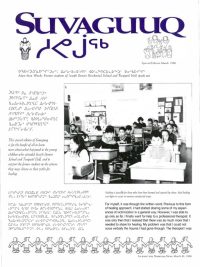
Suvaguuq – Special Edition March 1996
This special edition of Suvaguuq is for the benefit of all to learn more about what happened to the young children who attended Joseph Bernier School and Turquetil Hall, and to support the former students in the options they may choose as their paths for healing.
https://pauktuutit.ca/wp-content/uploads/1996_Suvaguuq.pdf
Year Published 1996
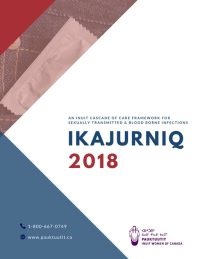
Ikajurniq 2018
Inuit in Canada are experiencing high rates of sexually transmitted and blood-borne infections (STBBIs). While there is limited Inuit-specific statistical information, we know that chlamydia, gonorrhea and syphilis rates in Inuit regions are high. For example, in Nunavut in 2013, where 85% of the population is Inuit, the chlamydia rate was 11 times that of the rest of Canada, and the gonorrhea rate was 27 times higher. In 2014, the syphilis rate was more than 15 times higher. While current rates of HIV in Inuit communities are low, the risk of being infected increases with the presence of other STBBIs. Community stakeholders fear a rapid rise in HIV unless effective prevention and treatment measures are put in place.
https://pauktuutit.ca/wp-content/uploads/IKAJURNIQ_Final_Layout.pdf
Year Published 2018
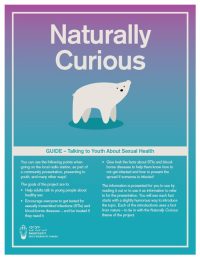
Naturally Curious – Presentation Guide
The project focuses on informing adults about sexual health and to encourage them to educate and influence youth about it and about STBBI testing. The long-term desired outcome is that youth (and adults) will understand what sexual health means and, as a result, they will practice safe sex and seek STBBI testing. While youth are a target audience, it is recognized that adults in the communities need to be supportive of healthy sexual behaviour and be willing to talk about it to create an environment in which young people will see healthy sexuality as the norm.
https://pauktuutit.ca/wp-content/uploads/7046_PIW_STBBI_Radio_Station_Handout_Web.pdf
Year Published 2018
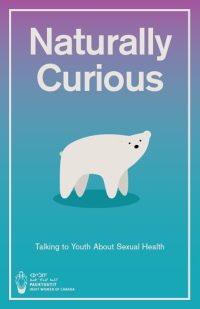
Naturally Curious – Information Booklet
The project focuses on informing adults about sexual health and to encourage them to educate and influence youth about it and about STBBI testing. The long-term desired outcome is that youth (and adults) will understand what sexual health means and, as a result, they will practice safe sex and seek STBBI testing. While youth are a target audience, it is recognized that adults in the communities need to be supportive of healthy sexual behaviour and be willing to talk about it to create an environment in which young people will see healthy sexuality as the norm.
https://pauktuutit.ca/wp-content/uploads/7046_PIW_STBBI_Guide_Web.pdf
Year Published 2018
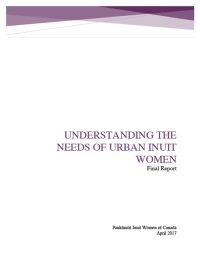
Understanding the Needs of Urban Inuit Women – Final Report
This report examines Inuit women’s experiences in five major Canadian cities: Edmonton, Winnipeg, Toronto, Ottawa and Montréal. Women’s stories reveal that migration rationale does not usually take the form of a linear and logical sequence of events. Rather, a combination of factors simultaneously pushes them away from their hometowns and pulls them into cities. While some women actively seek better opportunities in southern urban centres, the cost of housing and poor-quality services in the North also push them into migration pathways. Many interviews revealed that living in the city often felt like a “consequence” rather than a personal choice.
https://pauktuutit.ca/wp-content/uploads/358996508-Final-Report-UAS-Urban-Research-April-2017.pdf”
Year Published 2017

Fact Sheet: Why do Inuit women move South?
Each year, Inuit women leave their home community to move to urban centers in southern Canada. The pathway to city life from Inuit Nunangat is different for everyone, but there are many common reasons Inuit women move to the south. Here are some of the top reasons that we heard from Inuit women about why they move to big cities across Canada.
https://pauktuutit.ca/wp-content/uploads/UAS_factsheet_push_pull_factors.pdf
Year Published 2018
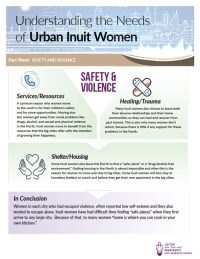
Fact Sheet: Safety and Violence
Women in each city who had escaped violence, often reported low self-esteem and they also tended to escape alone. Inuit women have had a difficult time finding “safe places” when they first arrive in any large city. Because of that, to many women “home is where you can cook in your own kitchen.”
https://pauktuutit.ca/wp-content/uploads/UAS_factsheet_safety_violence.pdf
Year Published 2018
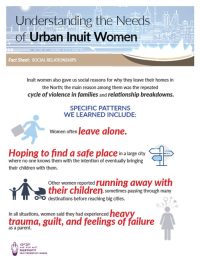
Fact Sheet: Social Relationships
Inuit women also gave us social reasons for why they leave their homes in the North; the main reason among them was the repeated cycle of violence in families and relationship breakdowns.
https://pauktuutit.ca/wp-content/uploads/UAS_factsheet_social_relationships.pdf
Year Published 2018
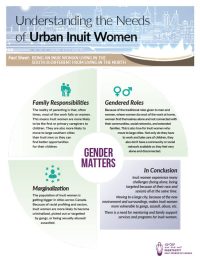
Fact Sheet: Being an Inuk woman living in the South is different from living in the North
Inuit women experience many challenges (being alone, being targeted because of their race and sexism) all at the same time. Moving to a large city, because of the new environment and surroundings, makes Inuit women more vulnerable to gangs, assault, abuse, etc. There is a need for mentoring and family support services and programs for Inuit women.
https://pauktuutit.ca/wp-content/uploads/UAS_factsheet_south_vs_north.pdf
Year Published 2018
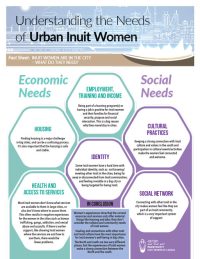
Fact Sheet: Inuit women are in the city – What do they need?
Women’s experiences show that the current resources and services only offer material things like housing and jobs; they don’t consider the cultural and community needs of Inuit women. Healing and connections with other Inuit and Inuit culture have the most importance for Inuit women’s well-being in big cities. The North and south are two very different places, but the experiences of Inuit women make a strong connection between the North and the south.
https://pauktuutit.ca/wp-content/uploads/UAS_factsheets_needs.pdf
Year Published 2018
